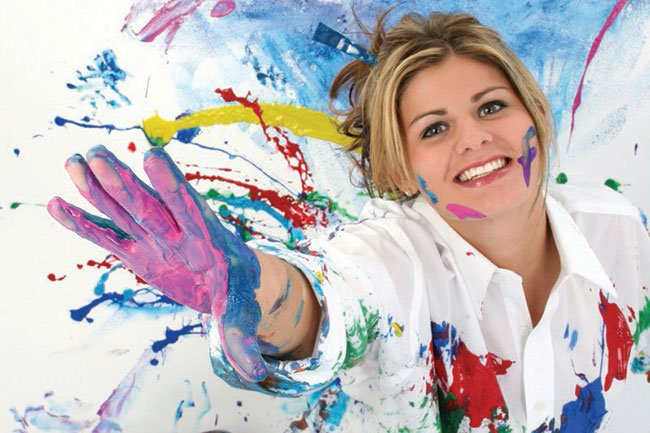
Primary Colours
How to use colour to bring out the best of any interior.
Now that summer is upon us and we are all feeling tired of the same old colours, let’s see how we can spruce up our interiors. One of the best ways to do this is by combining different colours to create new and exciting looks. Here are some helpful hints on how to use colour to its best advantage for any interior space. There are three simple rules to remember when combining colours. First, colours look different in different types of light. A red may look cold under fluorescent light, but will appear warmer in a cozy sunroom with natural light. A rich blue may look even richer in a darker room, but if placed in a brightly lit room, it will lose some of its intensity. Try samples of your colour choices in each room under various lighting conditions throughout the day.

By Alice Wright – Summer 1998
Second, one colour affects the colour next to it. Your favourite separate colours may be orange and blue, but when you put them next to each other, you might change your mind. You might not like dull beige, but when you put it with a splash of buttercup yellow, the two colours will look right together. Third, the amount of a colour in a room affects how you see it. An entire room of red or orange might be exhausting, but small pieces of these colours will add interest and intrigue to your decorating scheme. Little bits of yellow or purple will be noticed and appreciated because of their subtle presence. Keep these tips in mind when planning any colour scheme.
All colours will invoke different feelings in you, depending on how you pair them together. Here is a list of the different colour combinations you can use and the emotions and feelings generally created by each.
Warm colours
Reds, pinks, oranges, and yellows – the colours associated with fire – will create a cozy, warm interior space. Use these colours to make a very large room feel smaller and friendlier. These colours can be used on walls, for cushions and curtains, or for most anything to create a cheerful-looking room.
Cool colours
Greens, blue-greens and blues are the colours from a cool lake, a shady jungle or the sky. Use them to create a cool, calming effect for your particular interior space. Cool colours will also make a small space seem larger, as they seem to push back the walls. It is important to remember to have enough light in rooms with cool colours, otherwise it could appear too dark.
Contrasting colours
Contrasting colours are complimentary, and they include, for example, red against green, and yellow against blue or purple. These are my particular favourite combinations of colours, as each one intensifies the other. When they are placed close together, they create a stimulating interior. However, with heavy use the two complimentary colours tend to compete with one another, so try to use one more extensively than the other.
Subtle and muted colours
Pure colours which are darkened with black or grey are known as shades or subtle colours. Mixed colours are two pure colours that have been combined – for example, a yellow mixed with a bit of green, or an orange mixed with a hint of blue. These colours create a feeling that is best related to some of the colours Leaves in the fall. Mustard yellow or russet brown colours can create a cozy feeling for a special place in your home. Mix a black pillow in with these muted subtle colours and watch the room dazzle.
Neutrals
Neutral colours are white, cream, beige, tan, brown, silver, or grey. They all have a calming effect on any interior. These colours come form the earth and are sometimes called earth tones. Textures and surfaces are important for these colours and add interest to a pillow or couch. Begin with one or two of these simple colour schemes in a bathroom, or bedroom before you try them in a larger area such as a living room or kitchen. Put some paint chips and fabric samples together to see how they look. You can easily create a completely new feeling for an existing space just by mixing colours. Try matching some new colours such as that on a favourite bedspread, curtain or carpet, and see how the different colours make you feel. Let your colour scheme sit for a while and come back to it at different times of the day to see how the changing light affects the colouring and mood of your choices.
These tips will help you on your way to create a vibrant and stimulating interiors.



